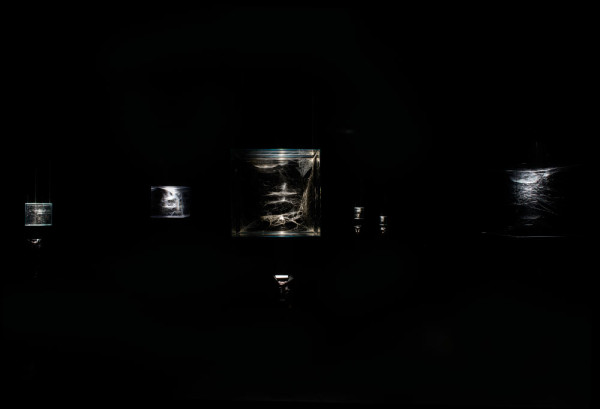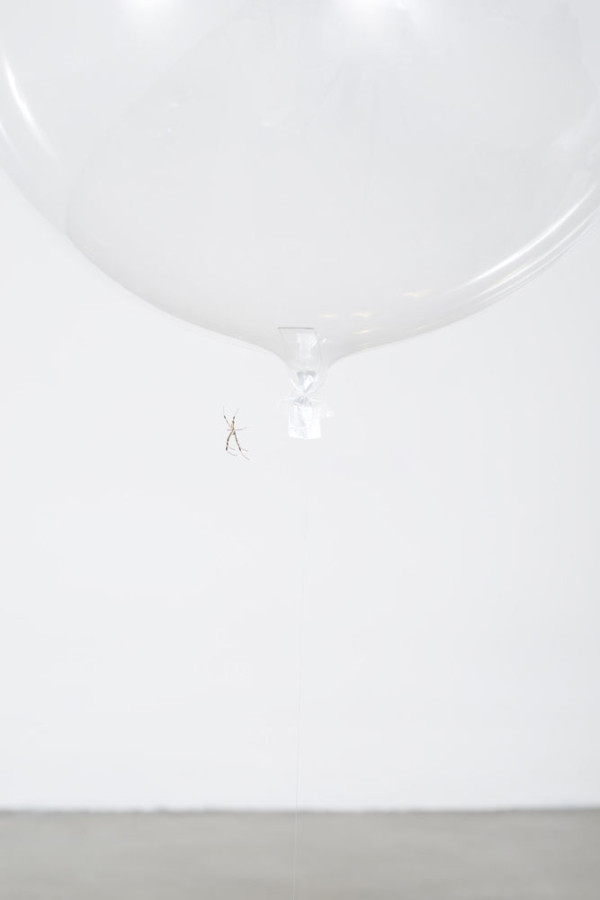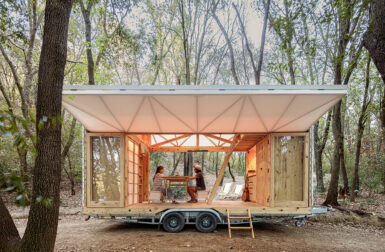Three years ago, artist Tomás Saraceno constructed this mirrored maze on the roof of the Metropolitan Museum of Art. Now he’s back in New York with an exhibition at Tanya Bonakdar Gallery… and this time he brought spiders!!!
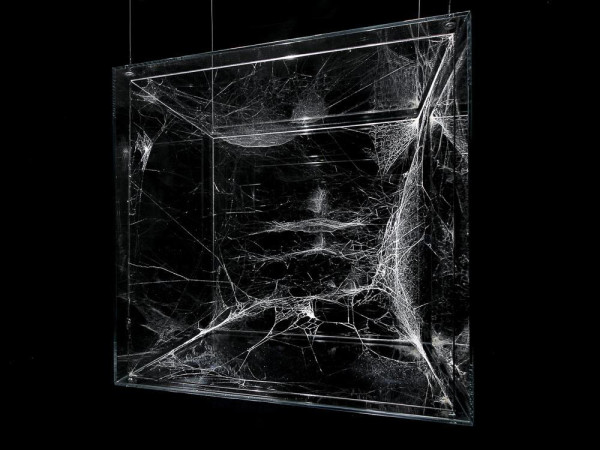
Hybrid solitary social semi-social musical instrument Apus: built by one Nephila clavipes-six days- a small commuity of Stegudyphus duffori-four months-and six cyrtophora citricola sipiderlings-two weeks, 2015
Every sculpture was constructed by a variety of spiders, each occupying an open box for a period of time before relinquishing their home to a new chosen resident, who would then add to the complex of spider silk. The boxes are rotated with every change of occupancy, often creating webs that defy familiarity in their bizarre disorientations.
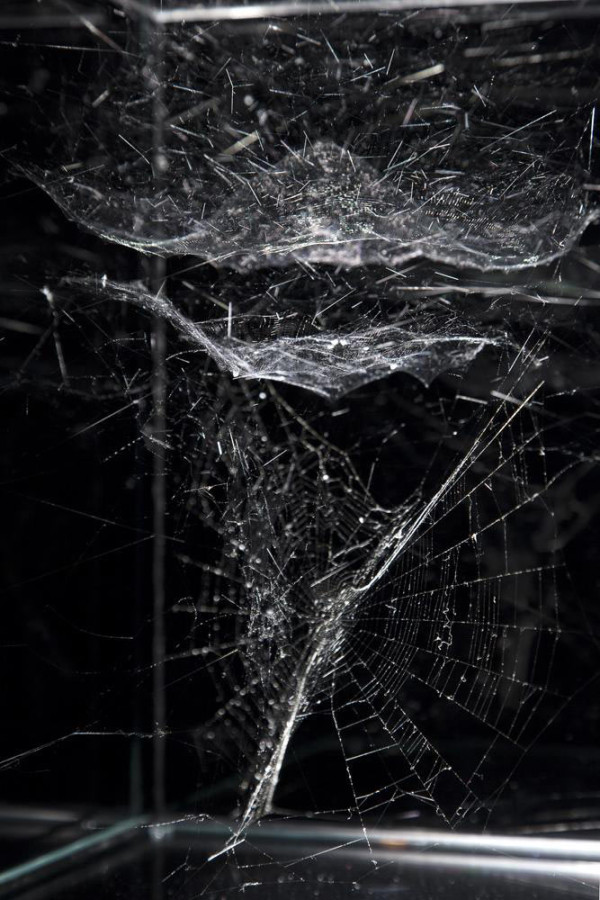
Detail of Hybrid solitary semi-social musical instrument Sagitta: built by one Angiope anasuja and a Cyrtophora moluccensis 2015

Hybrid solitary semi-social musical instrument Pavo: built by one Cyrtophora moluccensis – one week – one Argiope anasuja – ten days – and one Cyrtophora citricola – two weeks, 2014
Check out the long titles that note each spider species, length of stay, and if the box was rotated during the process. My primary interest was in the spiders themselves, so I took to Wikipedia for an afternoon. For example, I now know that my favorite web was created by the Cyrtophora citricola who weaves perfectly gridded webs that look like trapeze nets, or the Argiope anasuja that weaves a bright zig-zag X in every web. Apparently some varieties of the Stegodyphus can create a simple parachute to carry themselves on the wind!

Hybrid semi-social solitary musical instrument Arp87: built by a couple of Cyrtophora citricola – one month – one Agelena labirintica – two months – one Cyrtophora moluccensis – two weeks – and one Tegenria domestica – 4 months- (turned 4 times 180 degrees on Z axis), 2015

Detail of Hybrid semi-social solitary musical instrument Arp87: built by a couple of Cyrtophora citricola – one month – one Agelena labirintica – two months – one Cyrtophora moluccensis – two weeks – and one Tegenria domestica – 4 months- (turned 4 times 180 degrees on Z axis), 2015
One of the most intelligent artists alive, Saraceno has created web-like room-filling bungee installations while experimenting with weightless architecture for years (seriously). All of his work has this bizarre quality of appearing both monumental and microscopic while it plays between the mathematical and the organic. His move to using REAL spiderwebs therefore seems like the perfect partnership… for both him and the spiders. And in my opinion, they look a heck of a lot like galaxies.
The exhibition moves upstairs, where Saraceno continues to explore his “cloud cities” project with a number of helium-suspended, abstract structures.
The final work in the exhibition (below) is nearly invisible. In a room by itself, a single balloon hosts a tiny guest that weaves her own universe throughout the run of the show. The spider links the two bodies of work in the exhibition but more importantly connects our two worlds. I walked home a little slower than usual, with a keen eye and a renewed fascination for my eight-legged neighbors.
What: Tomás Saraceno: Hybrid Solitary… Semi-Social Quintet… On Cosmic Webs…
Where: Tanya Bonakdar Gallery, 521 W 21st St, New York
When: March 26 – May 2, 2015
All Images: Courtesy the artist and Tanya Bonakdar Gallery, New York. Installation photographs by Brett Moen. All others by Studio Tomas Saraceno.












